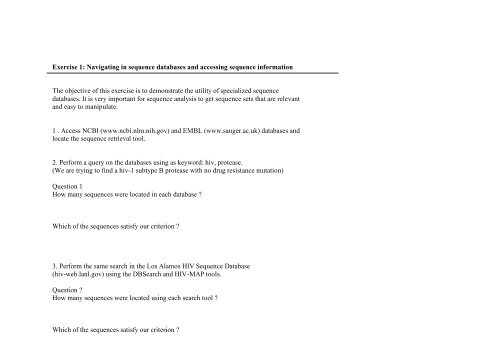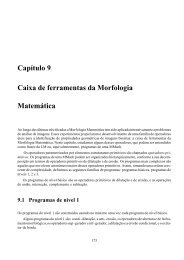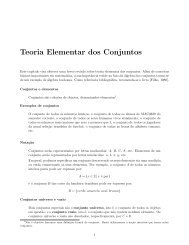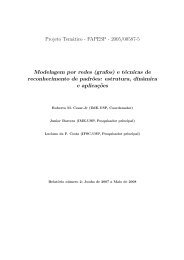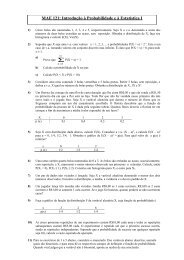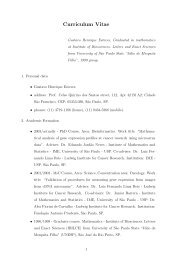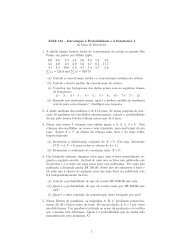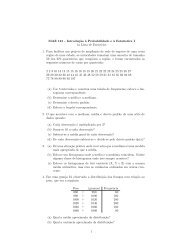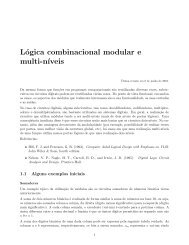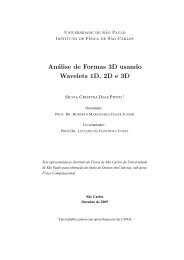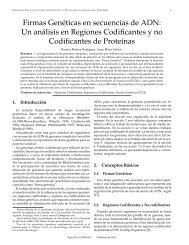Exercise 1: Navigating in sequence databases and accessing ...
Exercise 1: Navigating in sequence databases and accessing ...
Exercise 1: Navigating in sequence databases and accessing ...
Create successful ePaper yourself
Turn your PDF publications into a flip-book with our unique Google optimized e-Paper software.
<strong>Exercise</strong> 1: <strong>Navigat<strong>in</strong>g</strong> <strong>in</strong> <strong>sequence</strong> <strong>databases</strong> <strong>and</strong> access<strong>in</strong>g <strong>sequence</strong> <strong>in</strong>formation<br />
The objective of this exercise is to demonstrate the utility of specialized <strong>sequence</strong><br />
<strong>databases</strong>. It is very important for <strong>sequence</strong> analysis to get <strong>sequence</strong> sets that are relevant<br />
<strong>and</strong> easy to manipulate.<br />
1 . Access NCBI (www.ncbi.nlm.nih.gov) <strong>and</strong> EMBL (www.sanger.ac.uk) <strong>databases</strong> <strong>and</strong><br />
locate the <strong>sequence</strong> retrieval tool.<br />
2. Perform a query on the <strong>databases</strong> us<strong>in</strong>g as keyword: hiv, protease.<br />
(We are try<strong>in</strong>g to f<strong>in</strong>d a hiv-1 subtype B protease with no drug resistance mutation)<br />
Question 1<br />
How many <strong>sequence</strong>s were located <strong>in</strong> each database ?<br />
Which of the <strong>sequence</strong>s satisfy our criterion ?<br />
3. Perform the same search <strong>in</strong> the Los Alamos HIV Sequence Database<br />
(hiv-web.lanl.gov) us<strong>in</strong>g the DBSearch <strong>and</strong> HIV-MAP tools.<br />
Question ?<br />
How many <strong>sequence</strong>s were located us<strong>in</strong>g each search tool ?<br />
Which of the <strong>sequence</strong>s satisfy our criterion ?
5. Download 3 <strong>sequence</strong>s that are subtype B with no drug related mutations.<br />
<strong>Exercise</strong> 2:<br />
F<strong>in</strong>d<strong>in</strong>g Functional <strong>in</strong>formation for prote<strong>in</strong> <strong>sequence</strong>s:<br />
Function <strong>and</strong> structural features of HIV prote<strong>in</strong>s can be found <strong>in</strong> the SwissProt, PIR,<br />
Prosite, PDB <strong>and</strong> <strong>in</strong> the HIV protease Database. (Access BioCourse web site for l<strong>in</strong>ks ? )<br />
1. Access the Swissprot database (www.expasy.ch/sprot/sprot-top.html) <strong>and</strong> search for<br />
hiv protease from subtype B.<br />
2. Open some of the queries results <strong>and</strong> read the swissprot entry.<br />
Question ?<br />
Could f<strong>in</strong>d any <strong>in</strong>formation about functional doma<strong>in</strong>s, active site or three dimensions<br />
structure ?<br />
Swissprot db give l<strong>in</strong>ks to other <strong>databases</strong> ? Which ones <strong>and</strong> what the <strong>databases</strong> store ?<br />
3. Access the HIV protease Database <strong>and</strong> go to the “<strong>in</strong>formative part” <strong>and</strong> acess the table<br />
of LigantEnzyme Complexes.<br />
4. Choose one <strong>sequence</strong> <strong>and</strong> go to the PDB l<strong>in</strong>k.
Class Discussion :<br />
What is the importance to search more specialized database ?


